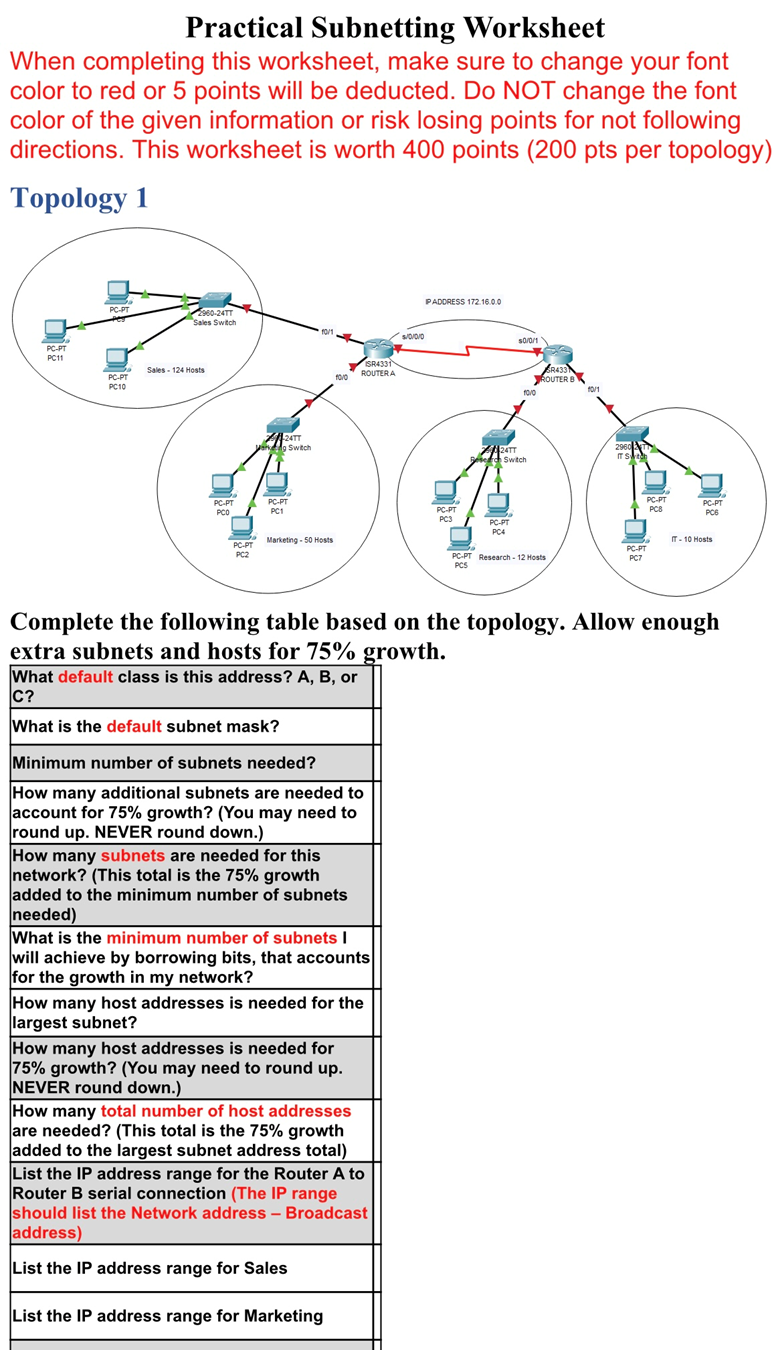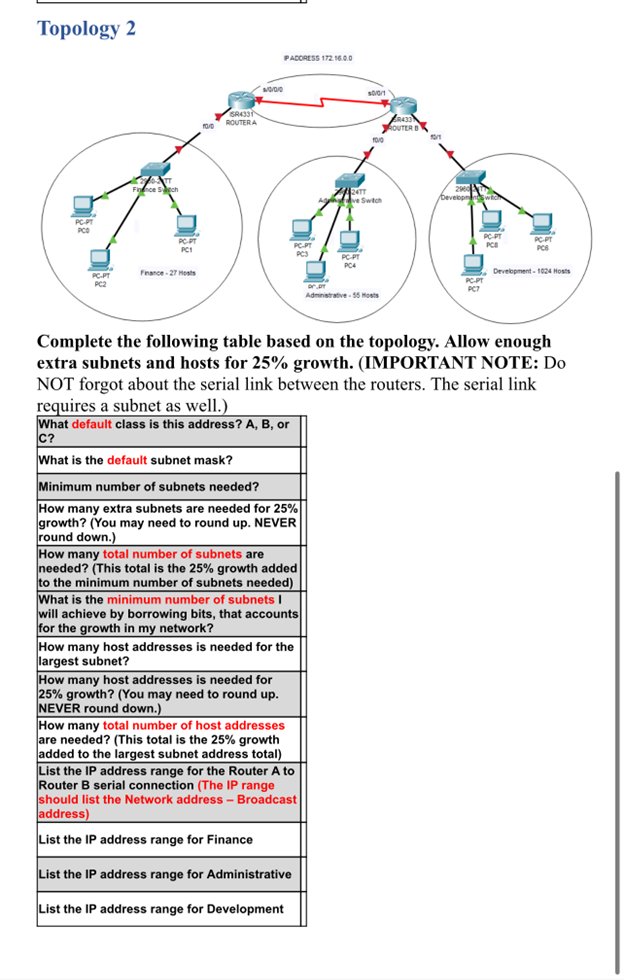Questions
Practical Subnetting Worksheet When completing this worksheet m


Answers :
Determining Default Class, Subnet Mask, and IP Address Class
Explanation: Identify the default class of the given IP address (Class A, B, or C), and correspondingly, determine the default subnet mask. For instance, if provided with the IP address 172.16.0.0, it falls under Class B, with the default subnet mask being 255.255.0.0.
Step 2: Computing Minimum Required Subnets and Hosts Considering Growth
Explanation: Calculate the minimum number of subnets needed for each department (Sales, Marketing, Research, IT, Finance, Development, Administrative) based on the provided number of hosts. Consider potential growth by rounding up the number of hosts to accommodate future expansion, typically around 75%.
Step 3: Partitioning the IP Address Range into Smaller Subnets for Each Department
Explanation: Divide the given IP address range (e.g., 172.16.0.0) into smaller subnets for Sales, Marketing, Research, IT, Finance, Development, and Administrative departments.
Step 4: Configuring Serial Connections
Explanation: Determine and assign a specific IP range for the serial connection between routers (Router A to Router B), considering the required number of hosts and subnetting requirements. Calculate network address, broadcast address, and valid host range within this subnet.
Step 5: Planning Subnet Allocation
Explanation: Outline a comprehensive subnetting plan for each department, ensuring sufficient hosts and accounting for potential growth. List IP ranges, including network addresses and broadcast addresses, for each department to complete the subnetting plan.
Subnetting involves dividing an IP network into smaller subnetworks to efficiently allocate IP addresses, considering factors like number of hosts, growth potential, and subnet masks to maintain an organized and functional network structure.
Topology 1:
- IP Address: 172.16.0.0
- Default Class: Class B (172.16.x.x)
- Default Subnet Mask: 255.255.0.0
- Minimum Subnets Needed: At least 5 subnets for Sales, Marketing, Research, IT.
- Additional Subnets for 75% Growth: Around 4 extra subnets.
- Total Subnets Needed for 75% Growth: 9 subnets.
- Borrowed Bits for Subnets: 3 bits initially, but 4 bits for future growth.
- Hosts for Largest Subnet (Marketing): 50 hosts.
- Hosts for 75% Growth (Marketing): Around 88 hosts.
Topology 2:
- IP Address: 172.16.0.0
- Default Class: Class B (172.16.x.x)
- Default Subnet Mask: 255.255.0.0
- Minimum Subnets Needed: At least 5 subnets for Finance, Development, Administrative.
- Additional Subnets for 25% Growth: Around 4 extra subnets.
- Total Subnets Needed for 25% Growth: 9 subnets.
- Borrowed Bits for Subnets: Initially 3 bits, but 4 bits for future expansion.
- Hosts for Largest Subnet (Development): 1024 hosts.
- Hosts for 25% Growth (Development): Around 1280 hosts.
Answered By

